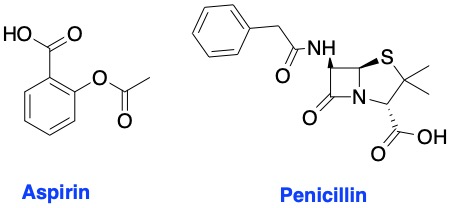Covalent drugs are drug molecules that attach to their targets by forming a strong chemical bond. Lately, there has been increasing interest in these drugs owing to their potency, sustained target engagement, and efficacy in many clinical indications like cancer. Anticancer drugs like ibrutinib, afatinb, neratinib, osimertinib, and dacomitinib are common examples. However, drugs employing this mode of inhibition are not limited to treating only cancer. In fact, penicillin and aspirin are classic examples of day-to-day drugs that achieve their effects by covalent inhibition.

In my opinion, covalent binding drugs are the future of modern therapeutics. Despite the historical concerns about idiosyncratic toxicities and the likelihood of off-target effects, these drugs are continually gaining traction in regulatory approval by the U.S. Food and Drug Administration (FDA). To date, there are over 40 FDA approved covalent drugs.
One example of this class of drugs is kinase inhibitors. Kinase inhibitors are drug molecules that inhibit protein kinase enzymes which are implicated in cancer cell proliferation and signalling. In the past few decades, there has been over 20 approved kinase inhibitors by the U.S. FDA. As of February 2020, the U.S. FDA has approved 52 small molecule protein kinase inhibitors. Kinase inhibitor drug discovery as a result has garnered wide attention from research labs and industry. The number of research articles and reviews on the topic has more than doubled in the past decade or so.
Some news and literature articles that discuss covalent binding drugs include:
- Covalent Modifiers Blog
- Covalent Binders in Drug Discovery
- Covalent Inhibition in Drug Discovery
- Covalent Modifiers: An Orthogonal Approach to Drug Design
- The Resurgence of Covalent Drugs
- Advances in Covalent Kinase Inhibitors
- Targeted Covalent Inhibitors
- Covalent Inhibitor Drugs
- Progress with Covalent Small-Molecule Kinase Inhibitors
- Modeling Covalent-Modifier Drugs
- Covalent Inhibitors Design and Discovery
- Emerging and Re-Emerging Warheads for Targeted Covalent Inhibitors
- The Taxonomy of Covalent Inhibitors
- Privileged Electrophile Sensors: A Resource for Covalent Drug Development
- Covalent Drugs form Long Lived Ties
- Covalent Drugs
- Covalent Small Molecules as Enabling Platforms for Drug Discovery
- Covalent Irreversible Enzyme Inhibitors
- Targeted Covalent Inhibitors for Drug Design
- Designing Covalent Inhibitors
- Covalent Inhibitors in Drug Discovery
- Drug Discovery for a New Generation of Covalent Drugs
This list is not at all comprehensive, but it highlights the wealth of information currently available about this important class of drugs. I will do my best to add more to the above list if I come across any new content.